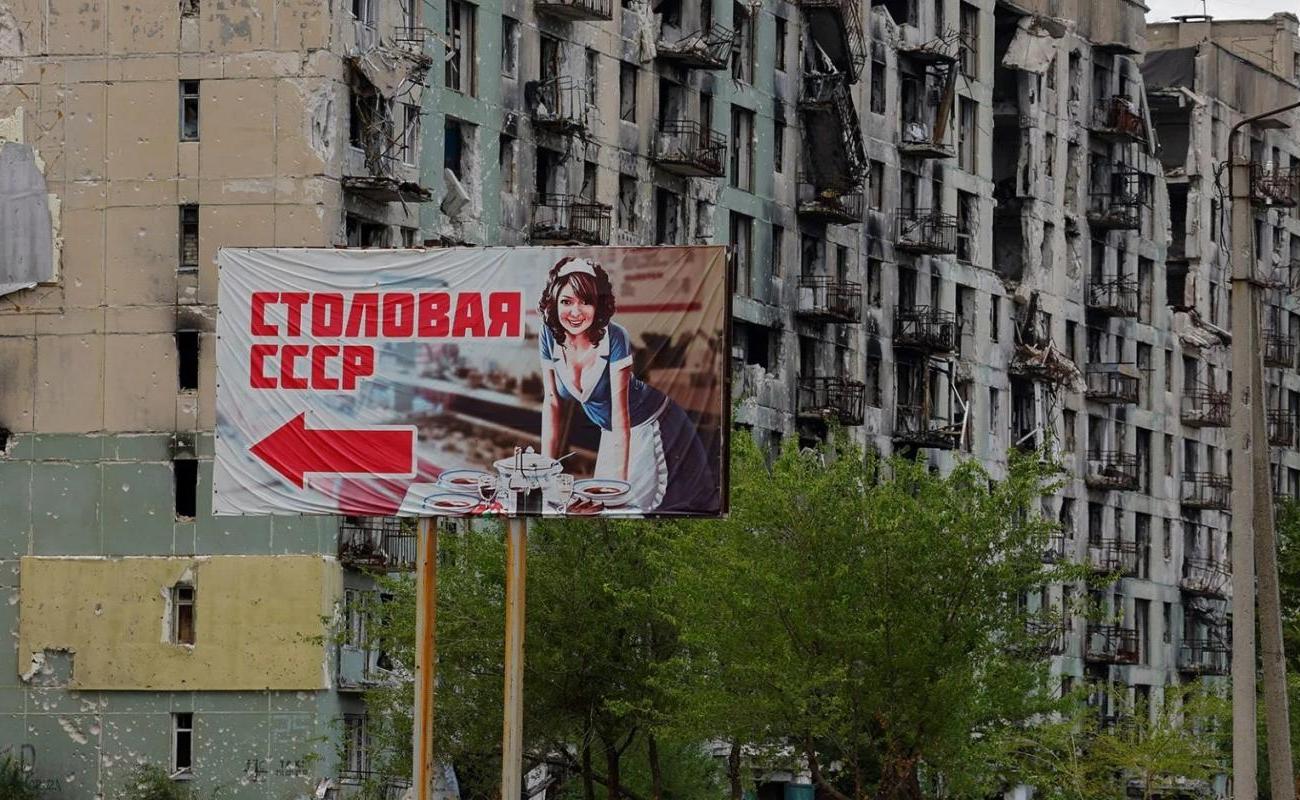Life in occupied Luhansk, told through pleas to Putin

NV has obtained rare firsthand accounts from residents in the heart of Russian-occupied Luhansk Oblast — personal appeals sent throughout 2024 to the Kremlin’s so-called “direct line” by people living in Slovianoserbsk district.
What’s really happening in the occupied territories? How do people there live? Getting clear answers to these questions from within Ukraine is nearly impossible. The reasons are obvious: the frontline, constant surveillance by Russian security forces, and the fear that grips those who remained under occupation.
But NV gained access to a sliver of truth — directly from those inside the occupied zones.
From intelligence sources, the newsroom obtained an internal document prepared by the “administration” of Slovianoserbsk district in Luhansk Oblast. It contains nearly 100 letters to Putin sent in 2024 from residents in this region — located roughly in the middle of a triangle between Luhansk, Alchevsk and Lysychansk — via the Kremlin’s so-called public outreach channel.
The authors are varied, but their letters share a familiar pattern: all begin with a groveling address to “respected Vladimir Vladimirovich,” followed by strikingly similar pleas. And these pleas are damning.
They expose the reality that a country threatening World War III and casually spending millions on overnight drone strikes against Ukrainian cities is unable to provide even the most basic necessities to the people it claims as its own “citizens” — heating, clean water, sewage, gas, or access to doctors.
Those writing these chelobitni — old-style petitions to a czar — aren’t asking for justice in the abstract. They’re simply trying to survive: a pane of glass for a shattered window, a pharmacy within 50 kilometers, an ambulance that actually shows up, a roof that doesn’t leak.
These appeals to the “tsar” crack open the glossy facade created by puppet administrations and Russian state media, revealing what daily life under Russian control really looks like.
Behind the façade of occupation
A dozen of the appeals reviewed by NV center on the day-to-day hardships in small towns and villages across central Luhansk Oblast.
In the village of Khoroshe, locals wrote to the Kremlin that there’s no post office or pharmacy, and the nearest one can only be reached by private transport. It’s a similar story in nearby Sabivka, Vesela Hora and Lobacheve. One elderly woman wrote that she has to walk several kilometers just to pay her utility bills.
In Rodakove, a man begged Putin for something painfully basic: to have glass installed in his windows. His home has five windows with no glass — just plastic sheeting in place of panes. “It’s winter — cold,” he wrote.
A woman in Lotykove told the dictator that a powerful windstorm last November tore the roof off her apartment building. But in the six months since, the local “administration” hasn’t fixed it, and now every rainstorm floods their apartments.
A resident of Metalist described her life in an apartment block where the sewage backs up as many as 10 times a month. Residents pay out of pocket for plumbers, while utility services ignore their calls altogether.
In Lobacheve, the roads have become so impassable that school buses, garbage trucks — even ambulances — can’t reach the village.
In another Slovianoserbsk district settlement, Pryvitne, water supply issues have persisted since 2022 and remain unresolved to this day.
Some stories verge on the surreal. One local pensioner told Putin in her letter that her 10-hectare land plot hasn’t brought in any income since 2014 — the Russian military dug trenches and bunkers on it back then. The land still hasn’t been returned, even though the front line moved far west long ago.
Following the Soviet playbook
There’s another side to this story: While residents in the occupied district plead directly with Putin to fix roofs and sewage systems, the local Russian-imposed “administration” is pouring its money and energy into more pressing matters — propaganda and political indoctrination.
NV obtained another internal document from its sources — a schedule of public events planned by the “administration” of Slovianoserbsk district for 2025. The calendar lists 64 events, including professional holidays, concerts, religious celebrations, sports tournaments, rallies, and flash mobs. Of those, more than a third — 23 events — are overtly militaristic or propagandistic. Another eight carry explicitly anti-Ukrainian themes.
On Feb. 15, the district marked “Remembrance Day for Russians who performed their duty abroad.” On April 6, they commemorated the “storming of the SBU building in Luhansk,” followed just eight days later by the “Day of Victims of Ukrainian Aggression.”
May 9 was the usual Russian-style Victory Day spectacle. On paper, it featured a motor rally dubbed “Thank you, Grandpa, for the Victory,” a festival called “Songs of Victory,” youth flash mobs, a “Immortal Regiment” parade, and an official rally — the full set of pobedobesie rituals.
For June 2, a rally is planned in Slovianoserbsk to honor “those killed by Ukrainian Armed Forces airstrikes.”
On Aug. 30, they’ll commemorate the district’s fallen “defenders” and civilians. Sept. 2 will bring a rally marking Slovianoserbsk’s supposed “liberation from the Nazis,” and on Sept. 30, yet another — celebrating the “anniversary of reunification with Russia.”
And those are just a handful of entries from the agenda.
Meanwhile, the local youth are being targeted year-round. The “administration” has scheduled a steady stream of “patriotic” campaigns, themed performances at rallies, a song contest, chess tournaments for “Russia Day,” and roundtable discussions laced with ideological messaging.
